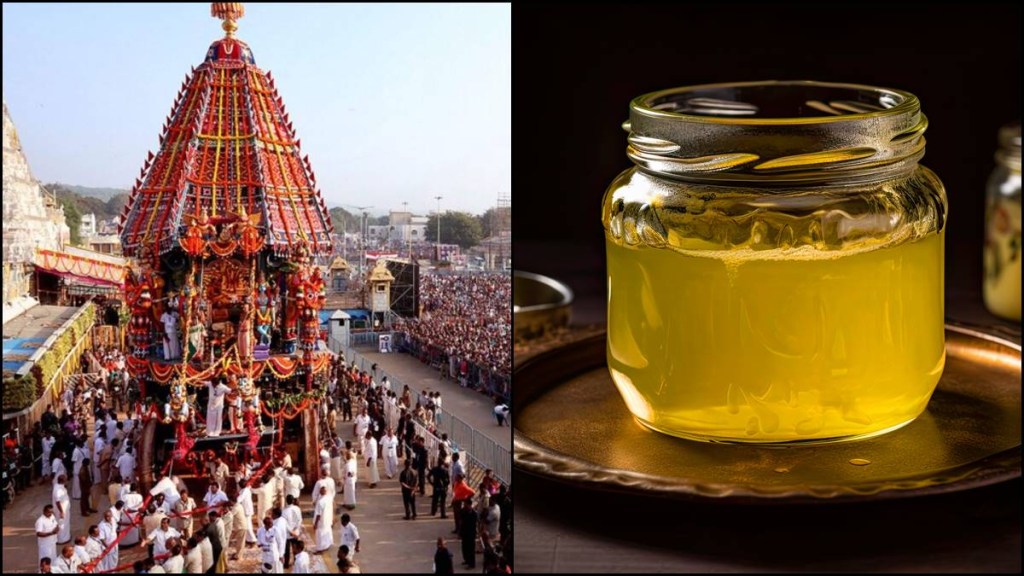The Tirupati Laddu controversy has sparked significant debate and concern regarding the authenticity and purity of the iconic prasadam offered at the Tirumala Tirupati Devasthanams (TTD) temple. Central to the controversy are allegations that the famed laddus, known for their unique taste and religious significance, may be adulterated or produced with substandard ingredients. This situation was intensified by reports suggesting that ghee used in these laddus could be mixed with inferior oils, raising questions about the integrity of the offerings that devotees cherish. The issue has prompted calls for transparency and stricter quality controls in the preparation of these sacred sweets, as well as a broader discussion about food purity in religious contexts.
With concerns over adulteration affecting not just this iconic sweet but also many other culinary traditions, it’s crucial for consumers to ensure they are purchasing genuine, high-quality ghee. While reading labels can provide some information, you can conduct several practical tests at home to verify the purity of ghee.
1. Visual Inspection
Start by examining the ghee closely. Pure ghee should have a consistent golden-yellow to deep-yellow colour, often influenced by the quality of the milk used. If the ghee appears pale, overly white, or exhibits an unusual colour, it may indicate adulteration. Additionally, check the texture; pure ghee should be smooth and free of lumps or granules.
2. Smell Test
Next, engage your sense of smell. Pure ghee emits a rich, nutty aroma that is both warm and inviting. If you detect any rancid, sour, or off-putting odours, it’s a sign that the ghee may be stale or mixed with inferior fats. The scent is a strong indicator of quality, as authentic ghee should smell fresh and pleasant.
3. Taste Test
A small taste can also reveal much about ghee’s purity. Pure ghee has a rich, creamy flavour with slight nuttiness and sweetness. Take a small amount and let it melt on your tongue; it should feel smooth and indulgent. If you encounter bitterness or an oily residue, these can be signs of adulteration.
4. Water Solubility Test
One simple and effective method to test ghee purity is the water solubility test. Take a tablespoon of ghee and place it in a glass of cold water. Pure ghee will float and maintain its shape, while adulterated ghee may dissolve or disperse, leaving a cloudy residue in the water. This test is a straightforward way to check for the presence of mixed oils or fats.
5. Sodium Bicarbonate Test
This method uses a common kitchen ingredient to reveal adulteration. Combine a tablespoon of ghee with a pinch of sodium bicarbonate (baking soda) in a small pan and heat it gently. If the mixture starts to foam excessively, it suggests the presence of synthetic fats, indicating that the ghee is not pure.
6. Iodine Test
The iodine test can also be informative. Mix a small amount of ghee with a few drops of iodine solution in a clear glass. Pure ghee will not change colour, while a blue or purple hue suggests the presence of unsaturated fats, indicating adulteration. This test can be a bit more technical but is effective for discerning quality.
7. Refrigeration Test
Another way to check ghee’s purity is through the refrigeration test. Place a small amount of ghee in the refrigerator for several hours. Pure ghee will solidify uniformly, whereas adulterated ghee may exhibit separation or different textures, revealing its mixed composition.
8. Price and Source Consideration
While these tests can provide insights into ghee purity, always consider where you purchase your ghee. Opt for reputable brands or local producers with a known history of quality. If the price seems unusually low compared to market averages, it might be worth questioning the product’s authenticity.








